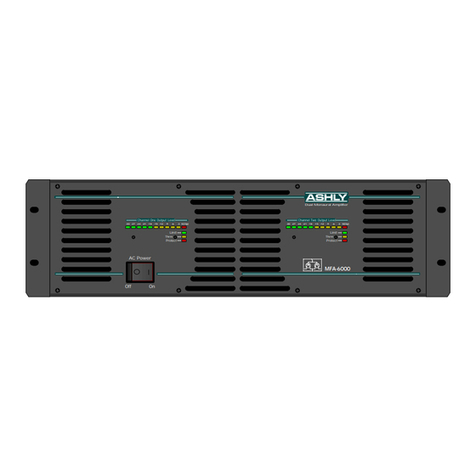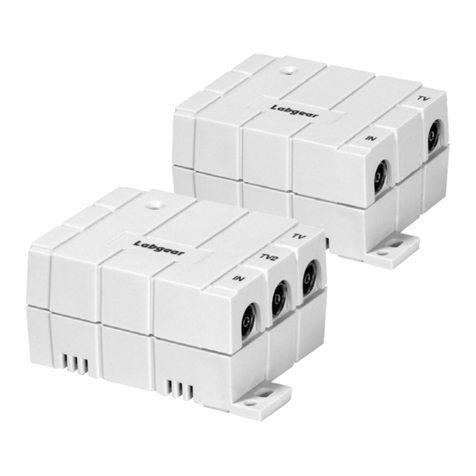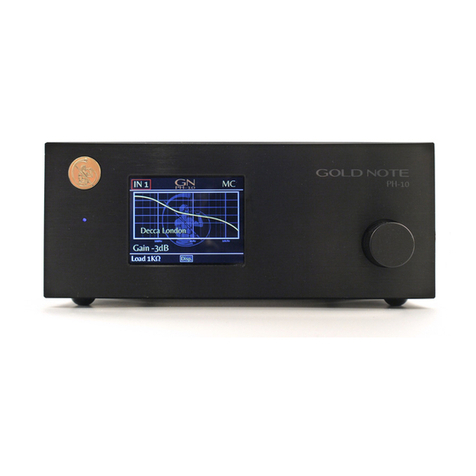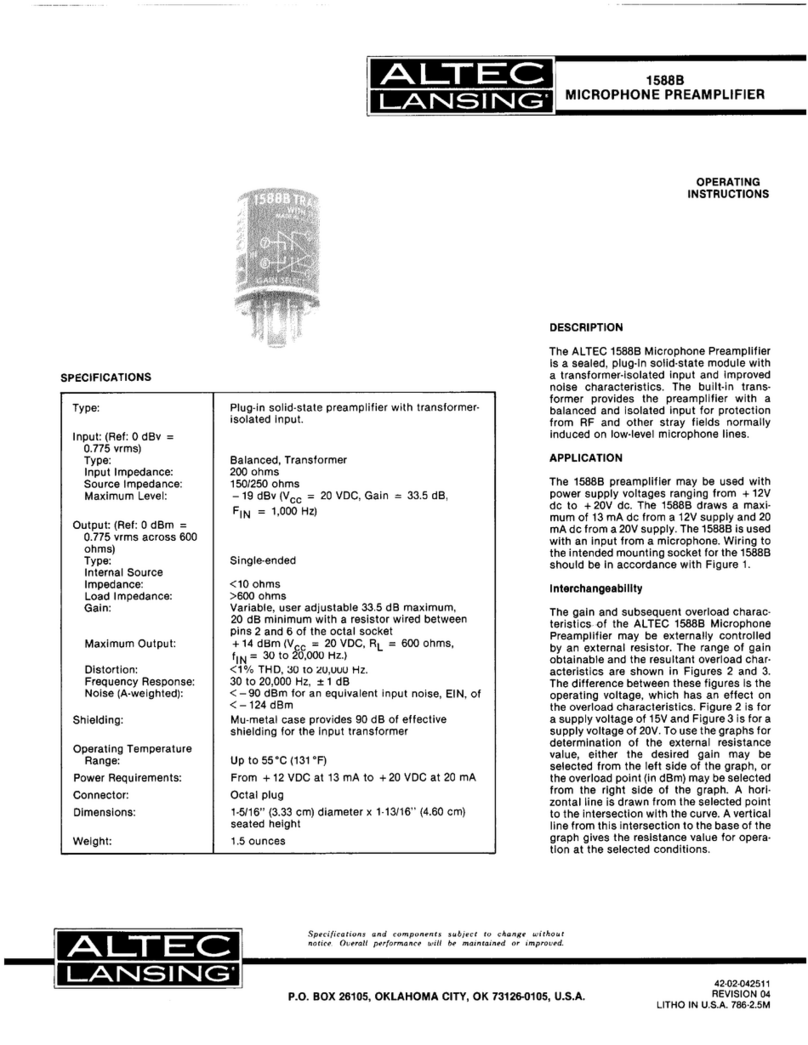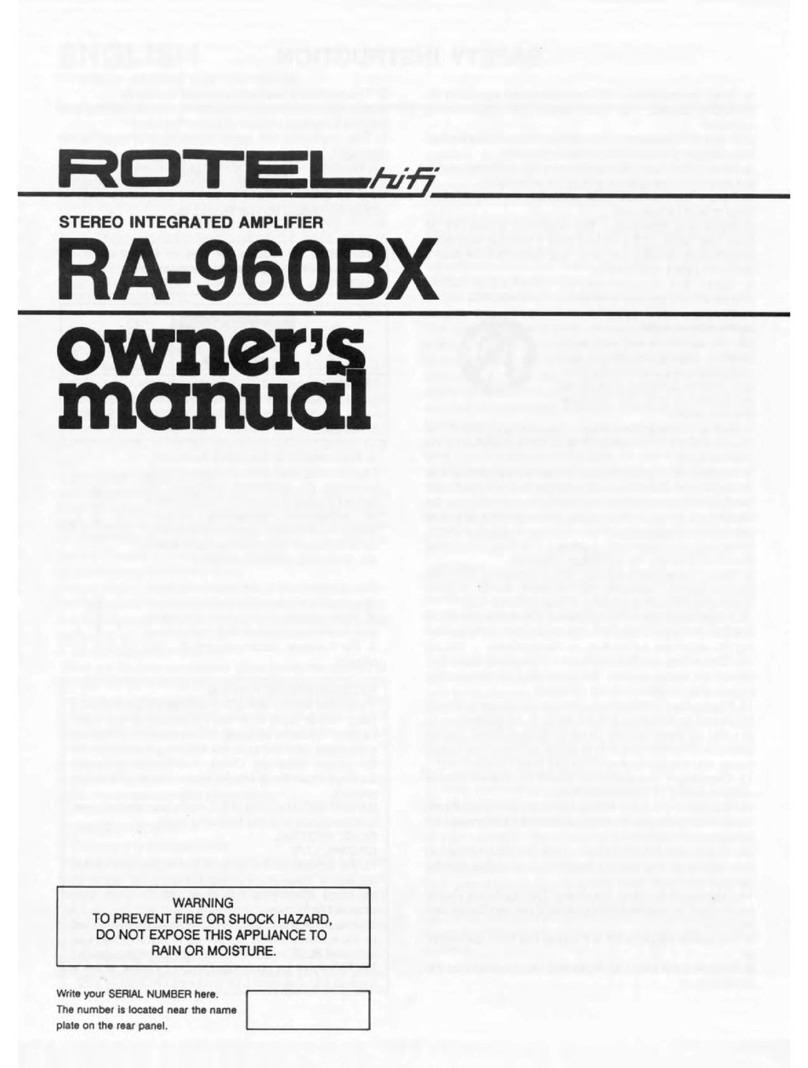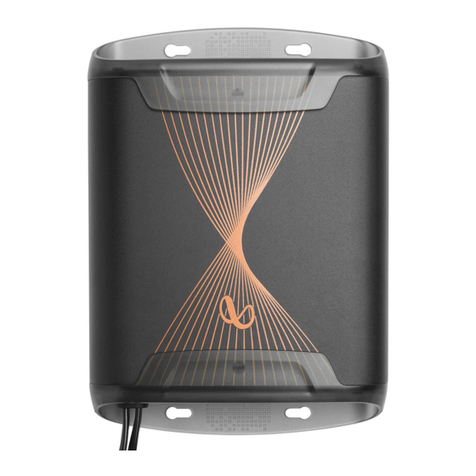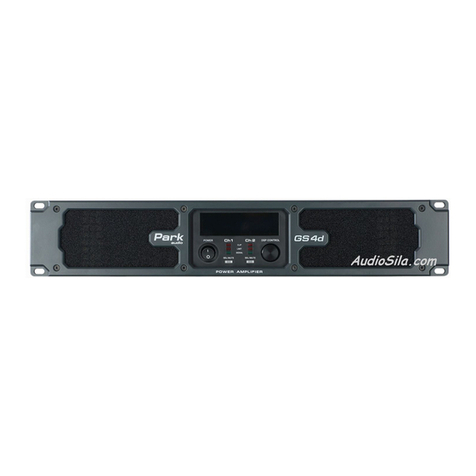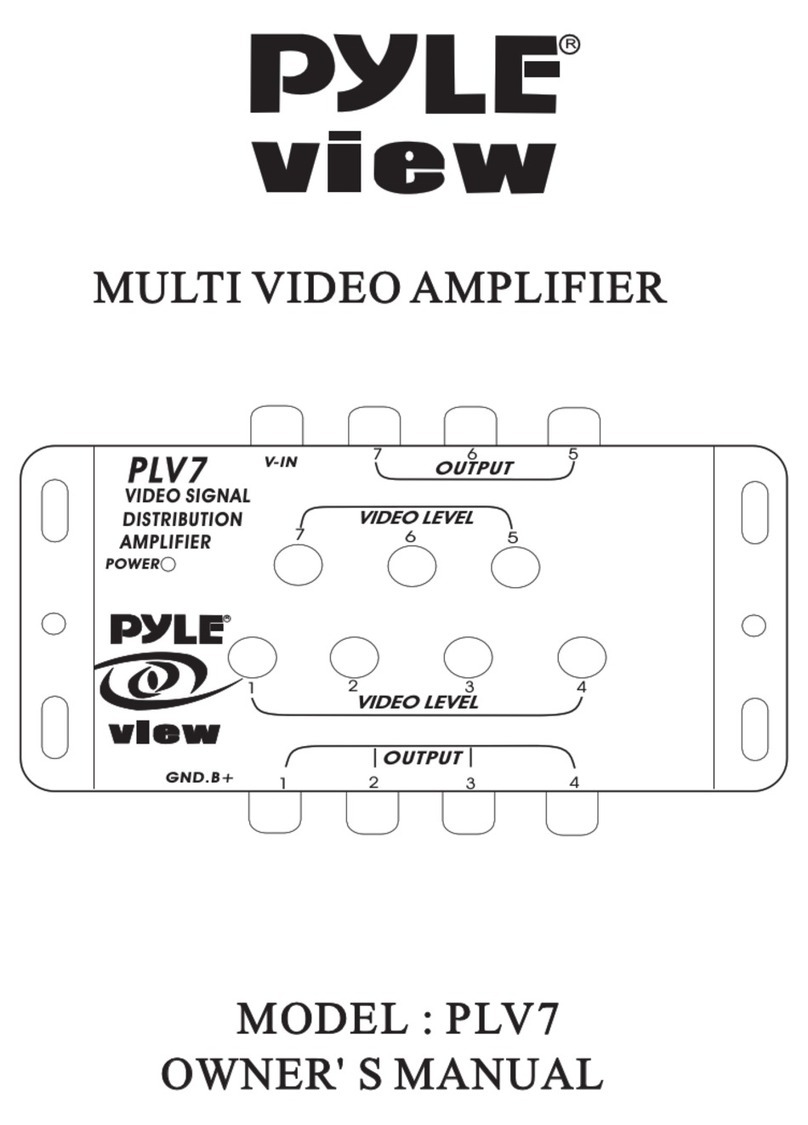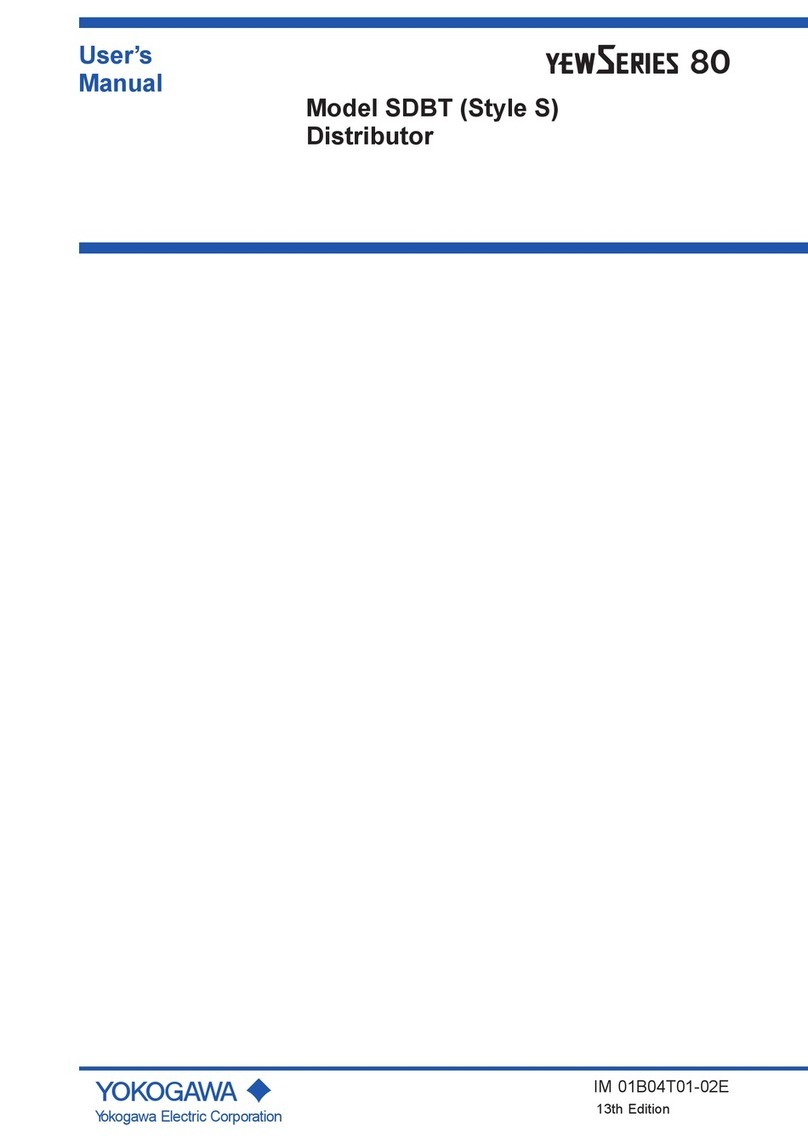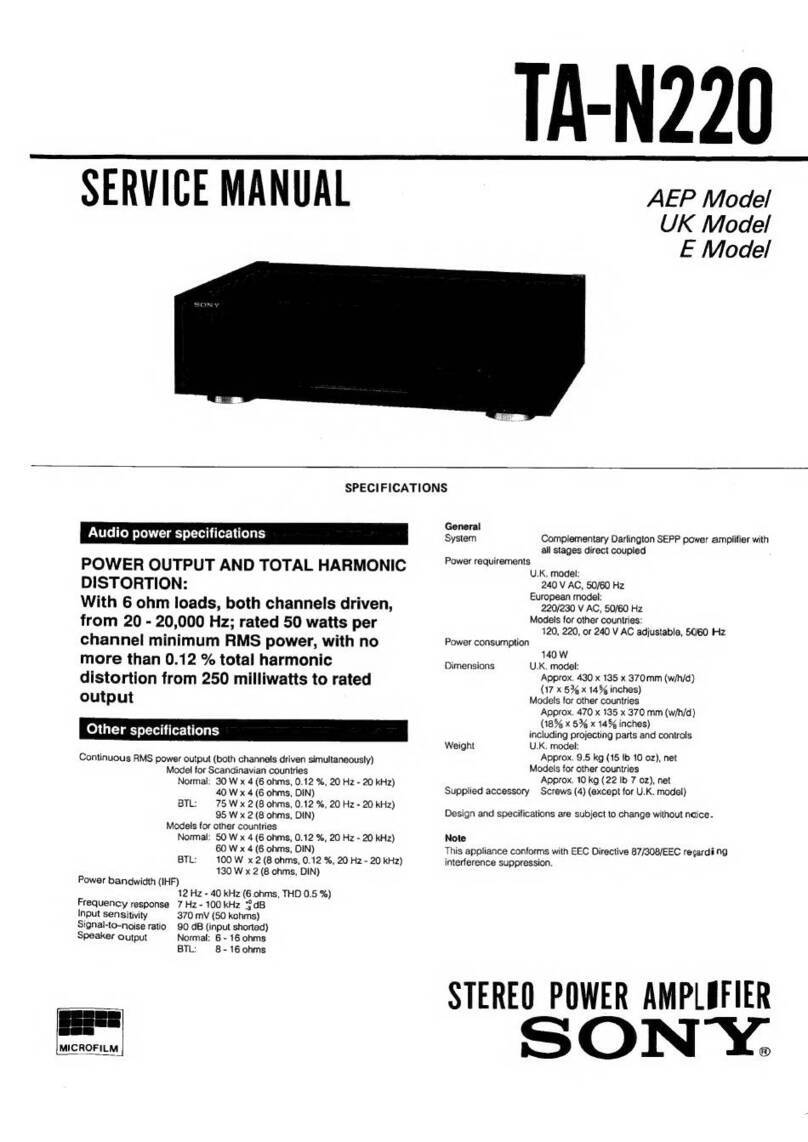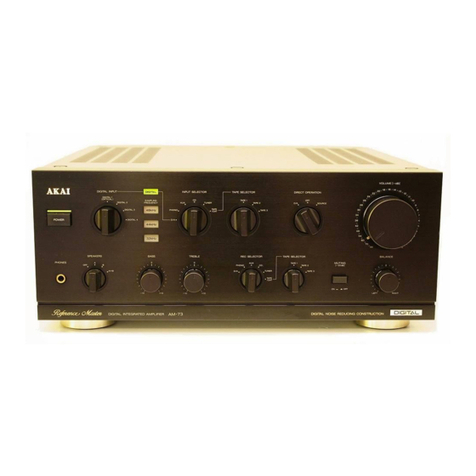THÖRESS 300B User manual

THÖRESS
300B Mono Power Amplifiers
.............................................................
INSTRUCTION MANUAL
Thank you for purchasing the THÖRESS 300B Mono Power Amplifiers. These single
ended triode amplifiers, hand-made in ermany, have been tailored around the highly
regarded directly-heated 300B power triode for an output of up to 10 watts into a 4, 8 or
16-ohm load. The zero-feedback circuit incorporates an extraordinary single-stage driver
topology which employs two EL803S power pentodes operating in triode mode. This
driver stage is so powerful that it could (theoretically) drive a loudspeaker load with
ultra-low distortion on its own. We believe that these state-of-the-art amplifiers offer the
highest possible sonic performance in the class of 10-watt amplifiers, when combined
with a pair of highly efficient loudspeakers such as our FR20 or 2CD12 speaker models.
Please read the following explanations and instructions carefully to get the most out your
amplifiers.
A NOTE ON INPUT SENSITIVITY
Please note that our Mono Power Amplifiers are specifically designed to have a
comparatively low input sensitivity. Such the idle noise of the preamplifier can be more
easily kept within inaudible limits when combined with high-efficiency to very-high-
efficiency loudspeakers such as our 2CD12 speaker model or even large horn systems.
This design choice has the further benefit of avoiding the problems of channel imbalance
and sub-optimal frequency response which may result when the preamplifier’s volume
controls rests at too low an angle of rotation. Should speakers with somewhat lower
efficiency be used it may, however, be observed that the volume-knob(s) of the
preamplifier need to be turned to a somewhat larger than usual an angle of rotation for
convenient loudness.
Please note that low input sensitivity of the power amplifier is a desirable feature
when driving highly-efficient speakers. It should by no means be suspected, that the
amplifiers do not have enough power to drive the speakers accurately when the
volume-knob(s) of the preamplifier needs to be turned to a somewhat larger than
usual an angle of rotation for convenient loudness.
DIRECTLY HEATED TUBES AND AMPLIFIER PLACEMENT
It is well known that directly heated triodes (DHT’s) such as the 300B (or 845) power
tube are rather sensitive devices. By their nature, these tubes are namely heated with thin

wires mounted with spring suspensions to mica supports pressed into the glass envelope.
The fragile heater wires can break very easily under shock or over-tension, especially
when they are glowing or when they are still hot.
D T-s are fragile devices and must be handled with exceptional care!
Never pull out a D T out of its sockets as long as it is still hot!
Never move or even transport a D T as long as it is still hot!
Moreover, the heater wires are able to swing very easily. As a result, severe vibrations of
the glass envelope will be converted into audio signal and passed on to the speakers. This
effect will be especially pronounced when very high-efficiency speakers are to be driven
by the amps. In view of this effect called tube microphony, amplifiers using DHT’s need
more considerate placement than amplifiers with the more widely used indirectly-heated
tubes in order to prevent sonic artifacts from entering the audio signal due to power tube
tube microphony.
Is is strongly advisable to place D T amplifiers on a rigid rack, shelf or platform,
carefully decoupled from the floor or wall, and as far away from the speakers as
possible, in order to prevent sonic artifacts from entering the audio signal due to
power tube microphony.
300B POWER TUBES
In our amplifiers the control-grid bias voltage cannot be trimmed in any way to adjust the
idle current of an individual power tube. This is a very reliable and stable way to achieve
grid bias, but it makes it especially important to use tubes that meet tight specifications.
The average 300B tube draws an anode current Ia of 70mA for an anode-cathode-voltage
of 400V when the grid bias is set to 90 volts. Allowing for a 10% tolerance in anode
current with respect to this quiescent point, only tubes with values Ia between 63 mA and
77 mA should be used to equip the amplifier. Although matching the power tubes is not
very critical, a difference in the Ia values of the two tubes of a matched pair should be
preferably not more than 5 mA. The use of 300B tubes with questionable tube data and/or
poor quality will lead to inferior sound quality or in (extreme cases) even to serious
damage to the amplifier. If there is any doubt that a certain 300B power tube actually
fulfills the stated requirements, the idle current can be easily determined by Ohm’s law
by measuring the DC voltage-drop over the winding resistance of the output transformer
primary while the amplifier is powered on.
In view of the high voltages involved, measurements within the powered-on
amplifier circuitry should always be carried out by an experienced technician only !
When the power tubes are replaced for whatever reason, it is strongly advised to use only
high quality matched pairs tested for the above specs supplied either from the
manufacturer or a “decent” tube supplier.

Always remember to re-balance the amplifiers in the way described in the relevant
chapter when the amplifiers have been equipped with new power tubes.
Note that a carefully tested tube of current production can be a better choice than a
highly considered (and expensive) “new old stock” brand with questionable data.
BALANCIN THE POWER TUBE CATHODES
Eliminate eventual residual hum present in the system by adjusting the cathode
balance control on the rear panel of the amplifier case.
DC heating is provided for the 300B power tube with very simple and reliable circuitry.
The ripple of the heater supply may introduce residual hum to the signal if the amplifier
is not properly balanced with respect to the respective 300B cathode. In this case slight
hum may become audible when a very-high-efficiency speaker (large horn system) is
driven by the amp. To balance the 300B cathode and eliminate eventual hum present in
the system proceed as follows:
1. Power on the preamplifier, leaving all other devices of the setup switched off.
2. Turn the volume control(s) of the preamplifier to zero.
3. After one minute, power on one Mono Amplifier, leaving the second Mono Amplifier
switched off.
4. Wait for another minute until the warm-up process of the power amplifier has come to
an end. Then adjust the cathode balance control on the rear panel of the amplifier so as to
minimize the hum reproduced by the respective speaker when observed close to the bass
driver. Note that the hum will not necessarily be perceptible in every position of the
listening room due to standing waves (room modes). Once this adjustment has been
carried out properly no hum should be perceptible at the listening position.
4. Once the first amplifier has been balanced, it should be switched off again.
5. Now repeat step 1 to 4 with the second Mono Amplifier.
Once both mono amplifiers have been balanced with respect to their power tube cathodes,
the amplifiers will offer hum-free performance even when connected to very-high-
efficiency speakers.
Power tube aging, or replacement of the power tubes, will necessitate re-balancing
the amplifiers.
DRIVER TUBES AND MATCHIN CONSIDERATIONS
The THÖRESS 300B Mono Amplifier uses matched pairs of triode-strapped EL803S
power pentodes in the driver stage. These tubes have been carefully tested and hand-
picked to meet tight specifications. A triode-strapped EL803S tube (g2 tied to the anode
and g3 connected to the cathode) draws an average cathode current Ik of 40mA at an
anode-cathode-voltage of 290 Volt and a control grid bias of (minus) 8.3 Volt. Allowing
for a 10% tolerance, only tubes with Ik between 36mA and 44mA under the specified
quiescent voltages can be used to form matched pairs. The difference in the Ik values of
the two tubes of a matched pair should be preferably not more than 2mA.

Never use other driver tubes than the carefully tested matched pairs supplied by the
manufacturer. The use of driver tubes of questionable quality may lead to degraded
sound quality and, in extreme cases, to damage in the driver circuit!
When the amplifier is to be equipped with “fresh” driver tubes, proceed as follows:
1. Carefully clean the tube pins with a dry brush.
2. Spray a few drops of highly viscous oil (such as Ballistol) on a cotton-tip.
3. Then use the tip to apply a thin oil film onto the contact pins.
Tubes handled this way will move in and out of the sockets more easily and will help to
increase the life expectancy of these parts.
Never switch on the amplifier while one of the driver tubes is cold whereas the other
one is still hot, as it may happen if only one of the driver tubes has been replaced!
Never switch on the Amplifier until all tubes have been placed into their respective
sockets.
Never pull out a driver tube or a power tube while the amplifier is powered on !
Always remove all tubes from their sockets and put them in their original transport
box before shipping or transporting the amplifier.
S ETUP
To set up the amplifiers, proceed as follows:
Do not connect the amplifiers to the mains until the following steps have been taken.
1. Switch off all powered devices which are to be used in the setup.
2. Set the power switch of the amplifiers to the off position (power switch lever directed
downwards to the power inlet).
3. Place all tubes into their respective sockets very carefully.
Never switch on the amplifier until all tubes have been placed into their respective
sockets.
Always remove all tubes from their sockets and put them in their original transport
box before shipping or transporting the amplifier.
4. Bring the amplifiers into its final position on the rack, shelf or platform. Some remarks
regarding amplifier placement can be found in the relevant chapter of this manual.
5. Connect the speakers to the amplifier.
6. Connect the input of the amplifiers to the (main) output of the preamplifier and turn the
volume knob(s) of this unit to zero.
7. Power on all program sources and the preamplifier.
8. After a delay of about one minute, both power amps can be connected to the mains and
switched on.

Always switch on the program sources and the preamplifiers first, and then switch
on the power amplifiers with a delay of not less than one minute !
10. Select the desired program source on the preamplifier. Then adjust the volume for
convenient loudness, balance the channels and enjoy the music.
When powering off the system, always switch off the power amplifiers first, then
switch off the program sources and eventual preamplifiers observing a delay of not
less than 30 seconds.
Never switch a program source or the preamplifier on or off while the power
amplifier is powered on.
SPEAKER LOAD MATCHIN
Precise 4, 8 and 16-ohm load impedance matching can be attained with our 300B Mono
Power Amplifiers by changing the turns ration of the output transformers by way of
jumpers soldered to pairs of secondary terminals to form the patterns as indicated below.
4-ohm speaker:
(1 and 2) - (5 and 6) - (6 and 3) - (3 and 4) - (7 and 8).
8-ohm speaker:
(5 and 2) - (2 and 3) - (6 and 7) - (7 and 4).
16-ohm speaker:
(5 and 2) - (6 and 3) - (7 and 4).
….................................
1 o o 5 o = secondary terminal
2 o o 6 1 - Speaker-RED
3 o o 7 8 - Speaker-BLACK
4 o o 8
….................................
output transformer coil
It is well known that the distortion and the damping behavior (output resistance) of a tube
power amplifier is affected by the output transformer turns ratio. As our 300B Mono
Amp is a class-A triode amplifier, loudspeakers may be typically used with a higher
output transformer turns ratio than the one corresponding to the rated speaker impedance
(especially when the speaker efficiency is high). This would, theoretically, reduce the
distortion and lower the output resistance of the amplifier (both of which are desirable
features) at the expense of a lower maximum power output into the speaker load. On the
other hand, it is very unlikely that optimum sound quality will be achieved when speakers

are connected to a lower output transformer turns ratio than the one corresponding to the
rated speaker impedance. Thus:
It is possible to use a 8-ohm rated speaker with the 4-ohm load pattern.
It is possible to use a 16-ohm rated speaker with the 8-ohm or even the 4-ohm load
pattern.
It is not advisable to use a 4-ohm rated speaker on the 8-ohm or 16-ohm load
pattern.
It is not advisable to use a 8-ohm rated speaker on the 16-ohm load pattern.
POWER INLET AND FUSE
The THÖRESS 300B Power Amplifier draws a current of 1.0 or 0.5 amperes from the
120V or 230V mains respectively, which corresponds to a power consumption of about
115 watts. It is equipped with a single fuse located in the fuse case next to the power
inlet. Very occasionally, the fuse may blow at the moment the amplifier is powered on,
due to the current spikes drawn by the power transformer in this instant, especially when
power cords with very low internal resistance are in use. Should this problem arise more
regularly it may be advisable to use a fuse with slightly higher current rating. If, however,
fuses with larger current ratings still blow regularly the amplifier should be returned to
the factory for inspection.
Always remove all tubes from their sockets and put them in their original transport
box before shipping or transporting the amplifier.
.............................................................
THÖRESS...
A Tribute to Professional Equipment from
the Golden Age of the Electronic Tube !
.............................................................
Table of contents
Other THÖRESS Amplifier manuals
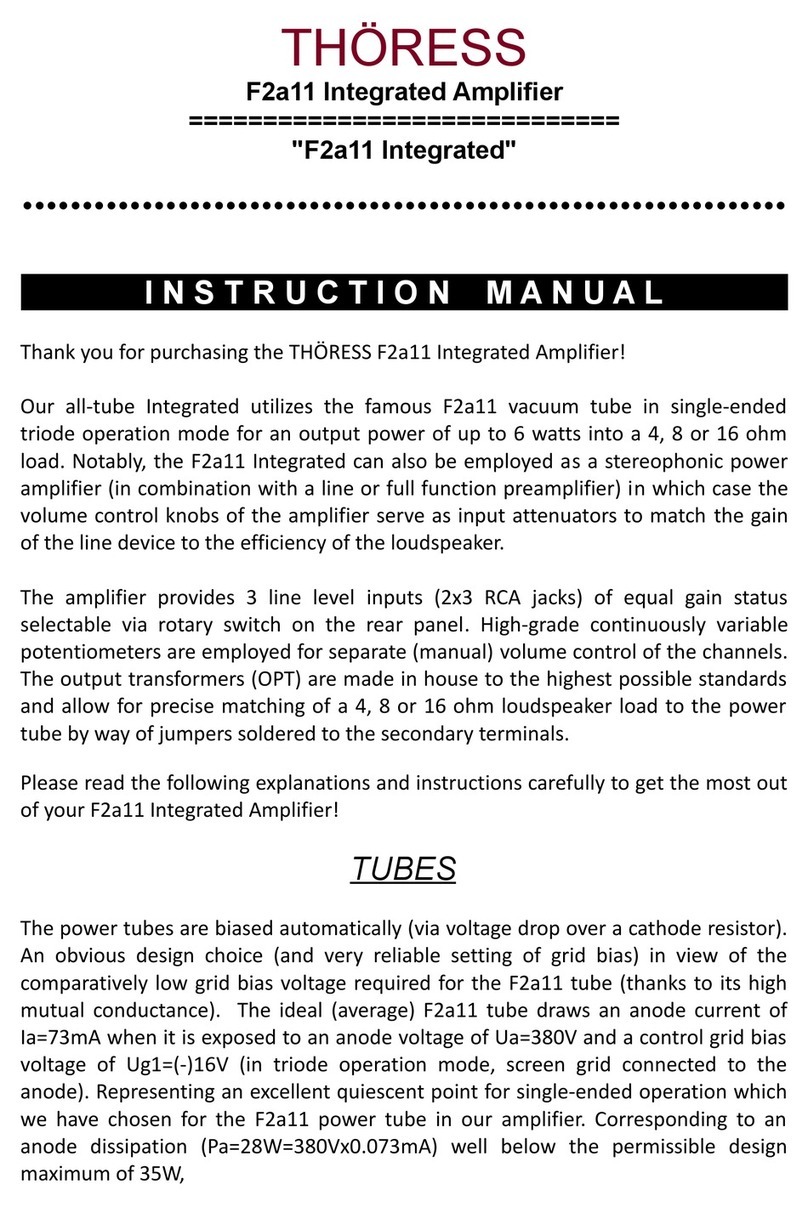
THÖRESS
THÖRESS F2a11 User manual
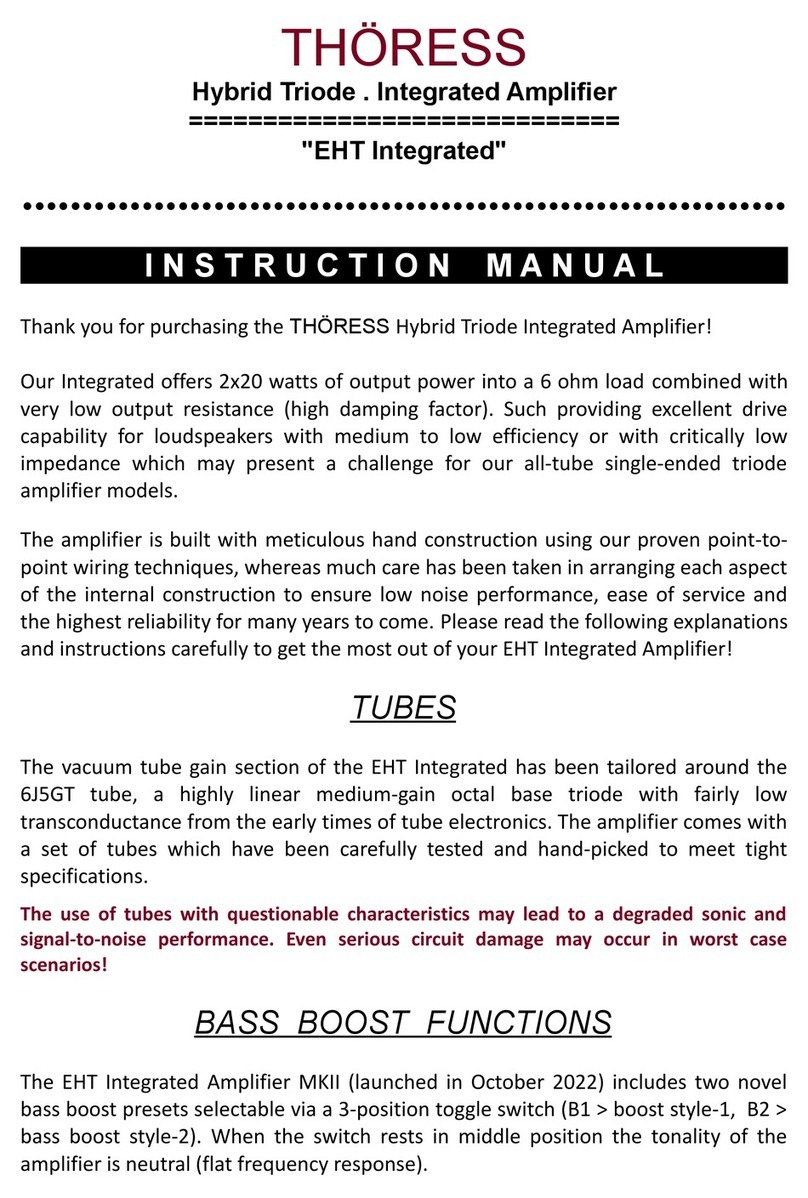
THÖRESS
THÖRESS EHT Integrated Amplifier MKII User manual

THÖRESS
THÖRESS Parametric Phono Equalizer Series User manual

THÖRESS
THÖRESS SE845 Mono User manual
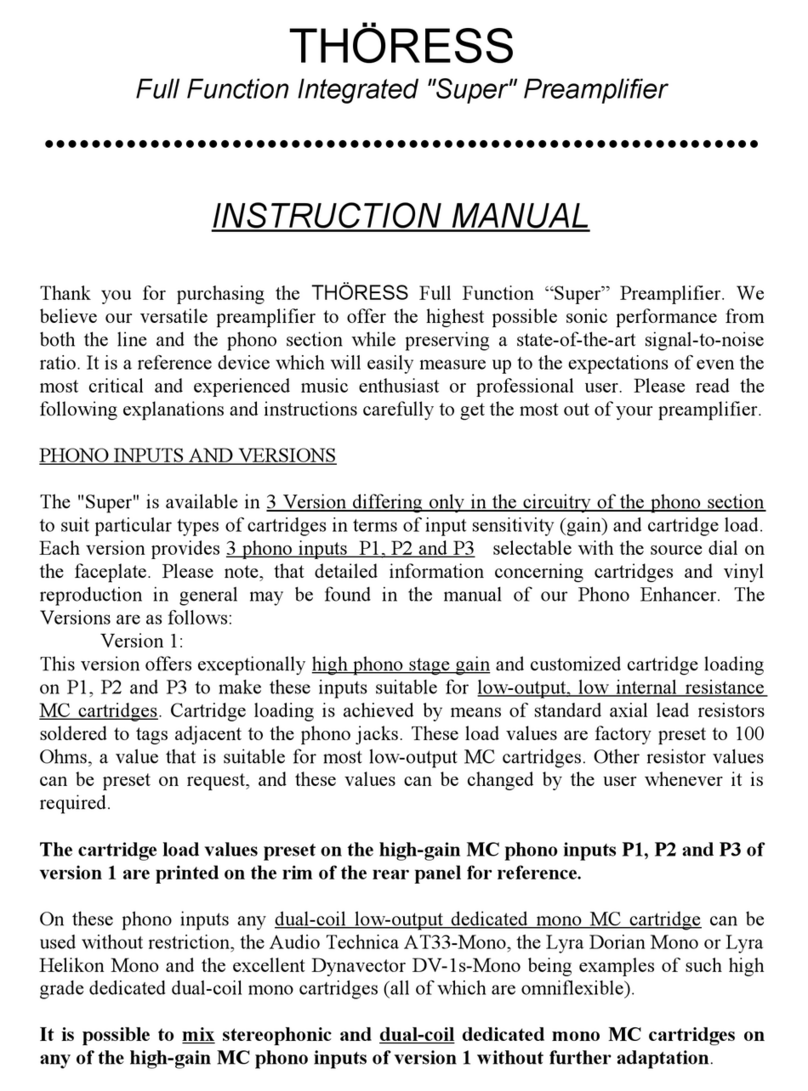
THÖRESS
THÖRESS Full Function Integrated "Super"... User manual
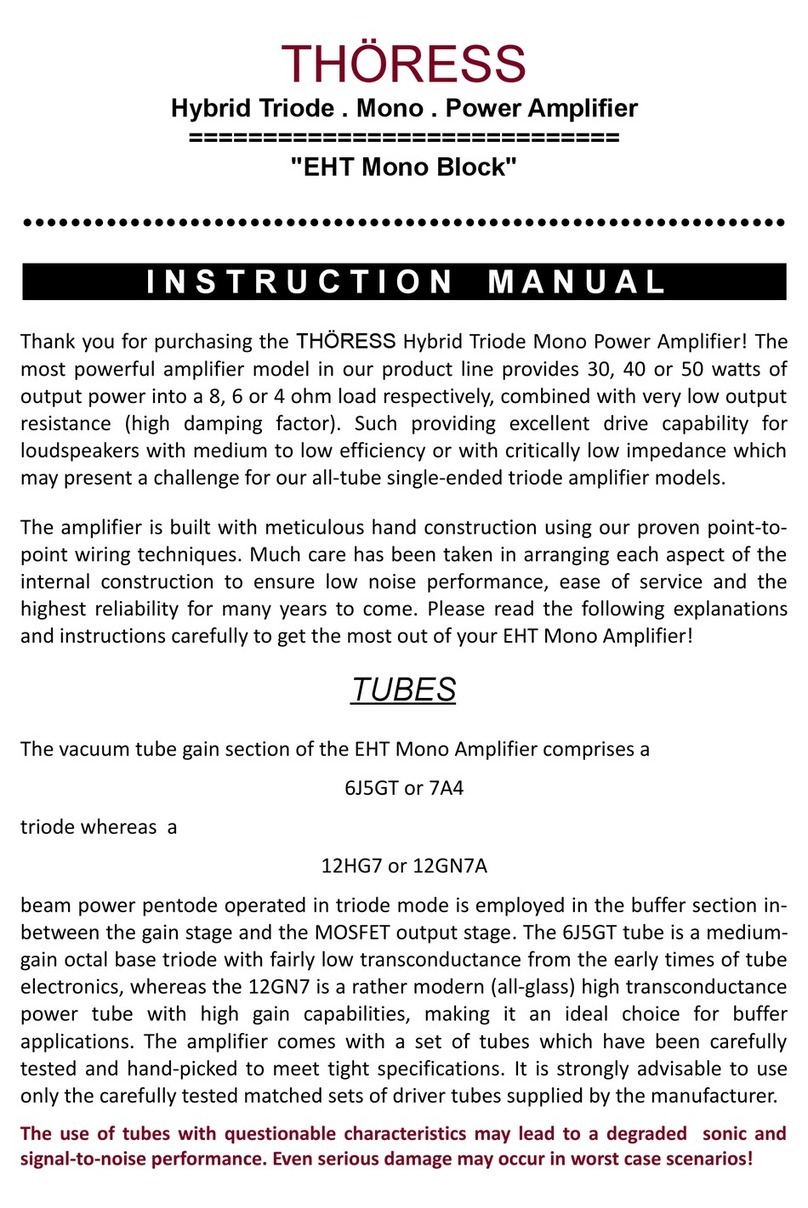
THÖRESS
THÖRESS EHT Mono Block User manual

THÖRESS
THÖRESS SE300B User manual
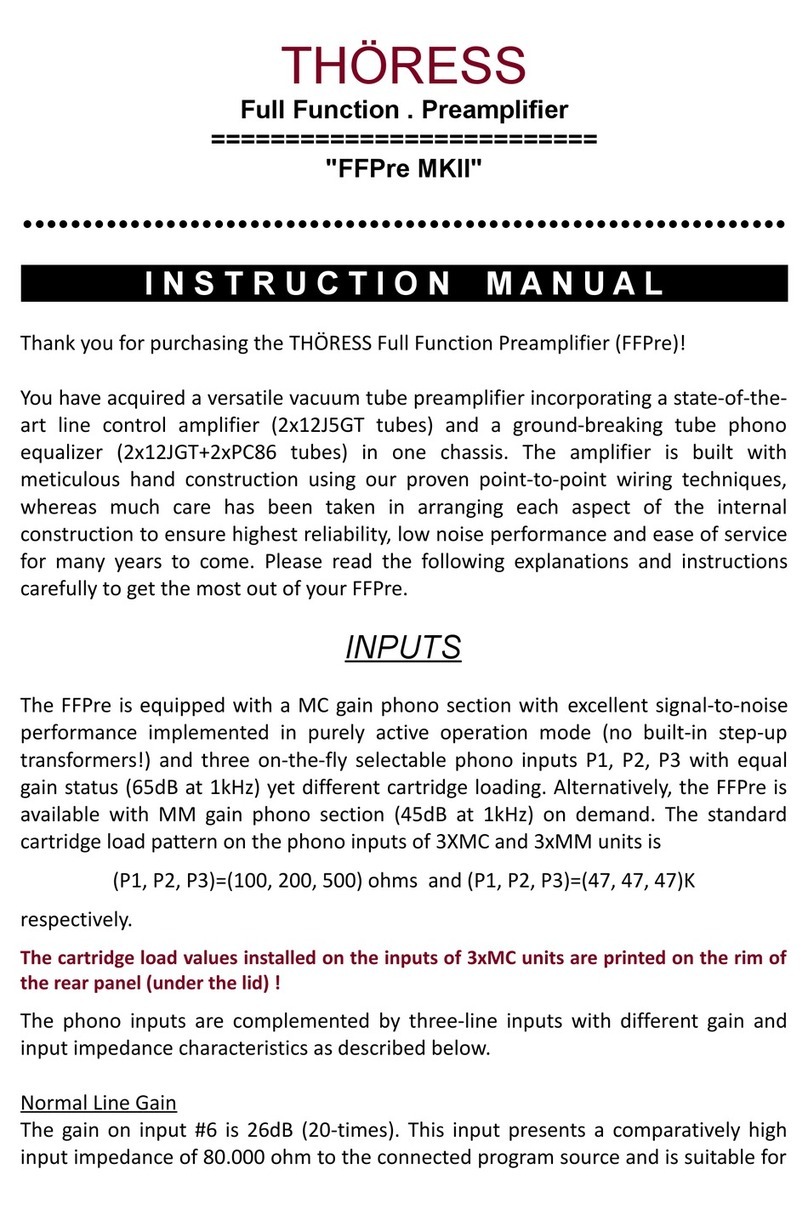
THÖRESS
THÖRESS FFPre MKII User manual
